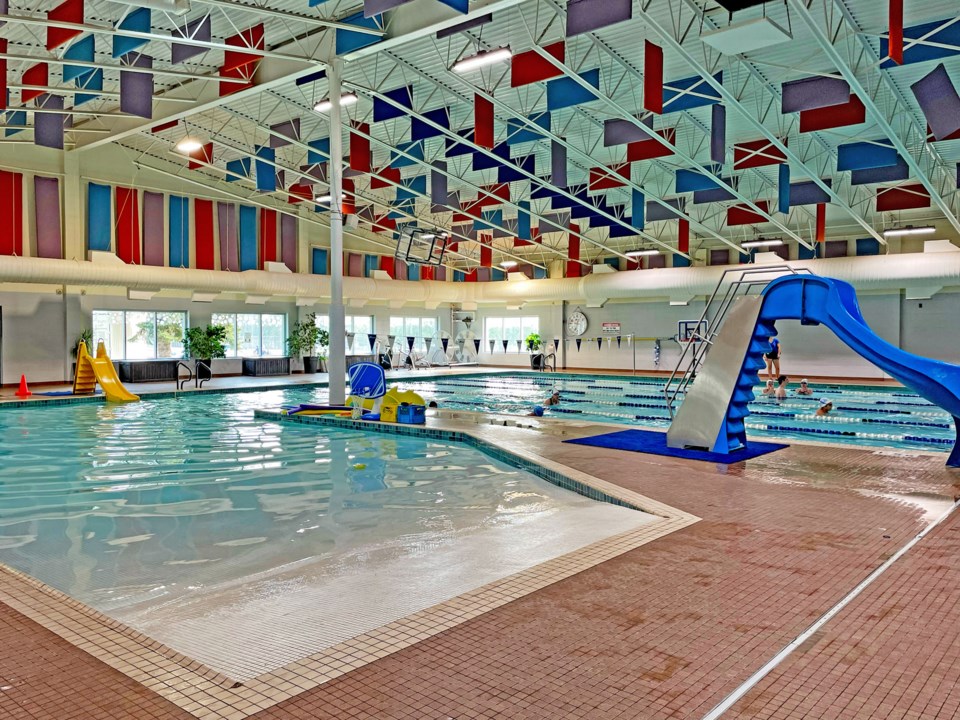INNISFAIL – The Town of Innisfail's council will soon be presented with final motions to pass the Borrowing Bylaw for the $15 million needed in the construction phase of the Innisfail Aquatic Centre modernization project, one that will see the facility closed for nine months.
If the proposed bylaw is approved next month, the town will seek a revolving line of credit up of to almost $15 million to manage cash flow during the project’s construction phase.
Since April 28, when council passed first reading of the bylaw, the town has meticulously followed guidelines set under the provincial Municipal Government Act that it must follow when seeking a loan for the construction of capital property.
“Borrowing for capital property with a term longer than five years must be advertised,” said Erica Vickers, the town’s director of corporate services, in a report to council on April 28.
The town advertised on May 6 and 13, with additional notice on its website.
Within 15 days from the last date of advertising (May 20), electors can petition council for a vote on the borrowing bylaw.
“Technically, the 15-day is ending on June 4. Then we're taking it to council on June 9 for final second and third reading,” Vickers told the Albertan.
Vickers said in her report to council that a Borrowing Bylaw becomes valid and binding if no application is made to the Court of King's Bench to have it declared invalid within 30 days after final passing.
The nine-month modernization construction project, which begins on July 7 and overseen by Chandos Construction and Group2 Architecture, will be funded through a combination of the town’s Facility Reserve (now at $2.8 million), a provincial Local Government Fiscal Framework grant, and a line of credit, followed by a debenture.
The town is currently waiting for approval, which could take another year, from a federal Green and Inclusive Community Building (GICB) grant application, which could bring in close to $6 million to offset the project’s total cost.
Vickers told council that administration is first seeking a line of credit for the full $15 million budgeted amount from a local financial institution.
“We chose that because we're not spending all the money up front at once, and as we get money to pay it down, as we apply for different grants, we will pay it down,” Vickers told the Albertan. “Our whole goal is to manage our interest costs.
“By having a line of credit, we are on a variable rate, so it will change day to day as the prime rate changes. However, right now things are going low,” added Vickers. “If at any point it looks like the rates are going to skyrocket, we'll immediately transfer that into some sort of long-term solution to manage our interest rate.
“We'll probably use our savings ($2.8 million) first, and we probably won't access the line of credit until we really need to, just because that will help manage the interest costs,” said Vickers. “If we're not drawing anything we're not paying the daily interest.”
However, Vickers said there is “one big caveat” with the entire Borrowing Bylaw process, if it is not passed by town council.
“If a petition comes in and the citizens stop it then we actually are not able to do the aquatic centre (modernization project). We can't fund it in other ways,” said Vickers. “If the petition is valid and they say no to the Borrowing Bylaw, the MGA dictates that the project is kind of dead in the water.”
If any community member can produce a legal petition from 10 per cent of Innisfail’s population, about 800 signatures from adult residents, within the 15-day period, council will have to accept it, said Vickers.
“The MGA says if you get this many people, it's valid,” said Vickers. “Then we have to do a referendum on the vote. The petition basically says we want to call this to a vote for the whole town, so then it goes to a vote for the whole town.
“It's a long process, and it's extremely unlikely to happen.”



